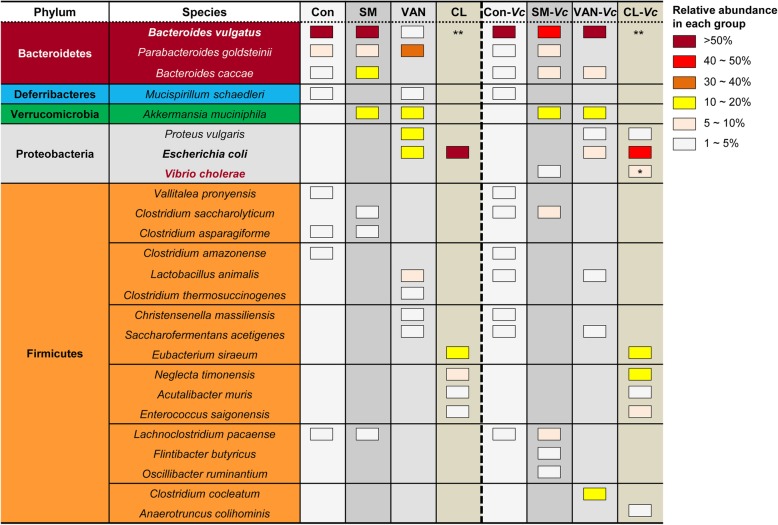Fig. 3.
Species-level microbiota populations in response to antibiotic treatments and after V. cholerae infection. Distribution of commensal microbial species at the phylum (far-left column) and species (second column) levels are presented by colors in 8 different experimental conditions. Con, SM, VAN, and CL in the first low indicate microbial samples of corresponding antibiotic treatments and Con-Vc, SM-Vc, VAN-Vc, and CL-Vc indicate samples of the same groups following V. cholerae infection. Three species were determined to belong to Bacteroidetes (brown) and Proteobacteria (gray) phyla and 17 species belonging to the Firmicutes (orange) phylum were identified. Only bacterial species with a relative abundance of > % of the total microbiota population were selected and displayed. Relative abundance of each species is indicated by color-coded boxes. For example, brown boxes mean that the abundance of a given species under a specific condition is > 50%. A complete elimination of Bacteroides vulgatus is indicated with **, while a pink box denoted by * indicates 8.81% V. cholerae occupancy

